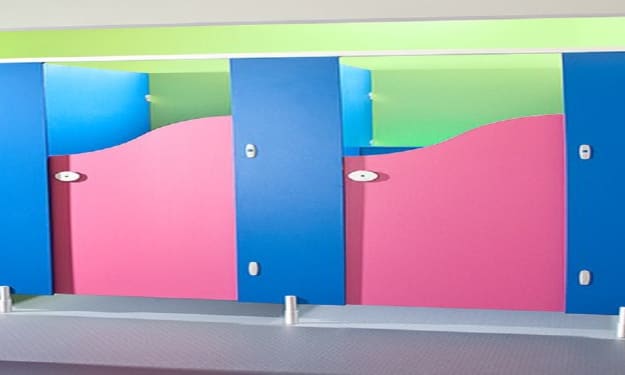Navigating Comfort: A Theoretical Understanding of the Toilet Design System
Toilet Design

Toilet dimensions play an important role in determining not only the efficient use of space but the overall comfort and accessibility for users of a bathroom design Although toilets may look like objects a standard installation though may vary in size, affecting factors such as user accessibility, ease of use and efficiency of bathroom space We will examine the main types of toilets, their importance and how common sense can contribute to a well-designed and easy-to-use bathroom.
Key Concepts:
1. Cup Height:
Standard height: A typical toilet bowl height is about 15 inches off the floor. This is considered a standard height and is comfortable for most users.
Comfort height: Some toilets have an elevated cup, commonly referred to as "comfort height" or "seat height," ranging from 17 to 19 inches this elevated setting is more accessible for individuals with mobility challenges.
2. Cup Size:
Round bowls: Circular toilets that are small and space-saving are common in small bathrooms.
Tall cups: Tall cups provide extra seating and are generally considered more comfortable. They are popular in large bathrooms.
3. Beautiful Design:
The rough-size distance refers to the distance between the wall outside the toilet and the center of the drain. Common stainless steel sizes are 10, 12, and 14 in. Choosing the right flexible size ensures a good fit with existing plumbing.
4. Width and Depth:
The width of the toilet is usually between 14 and 16 in. The depth from the wall to the rim of the bowl can vary from 28 to 32 in. These toilet dimensions affect the entire footprint of the toilet.
Considerations for User Comfort:
1. Simple Design:
An ADA-compliant restroom with a comfortable height cupboard, wooden receivers, and adequate clear flooring for individuals with mobility issues or disabilities is essential to ensure accessibility and ease of access they will be used
2. Ergonomic considerations:
The ergonomic design of the toilet includes adjusting the seat height, cup shape and overall dimensions to provide users with a comfortable and natural position.
3. Water management:
A compact toilet with an efficient flush helps save water. The main dual-flush toilet allows users to choose between full or partial flushing, saving water as needed.
Space Optimization:
1. Perfect design:
Compact toilets with round cups and space saving in small bathrooms or powder rooms are ideal for maximizing space without compromising efficiency
2. Toilet in the corner:
For unconventional bathroom layouts, corner toilets force corners, making them a practical solution for optimizing space
Reservation Considerations:
1. Installation Height:
The height of the toilet, including the height of the toilet seat, should match the height of the bathroom vanity and its surroundings to create a uniform and visually pleasing layout
2. Departures:
It is important that there is adequate space around the toilet, including space in front and on both sides, for ease of use and maintenance.
Conclusion:
Understanding the size of the toilet is an important aspect of bathroom design that goes beyond aesthetics. Whether you are renovating an existing bathroom cubicle or designing a new one, a thoughtful toilet size contributes to user comfort, accessibility, and space efficiency through toilet design tailoring it to the users’ specific needs and available space so you can create a bathroom that not only looks stylish but functions seamlessly It enhances the overall experience of everyone entering.
About the Creator
Cubicle Centre
Discover commercial toilet cubicles and washroom systems with Cubicle Centre. Includes case studies, design advice, CAD files and BIM objects. We manufacture toilet cubicles and washroom systems.






Comments
There are no comments for this story
Be the first to respond and start the conversation.